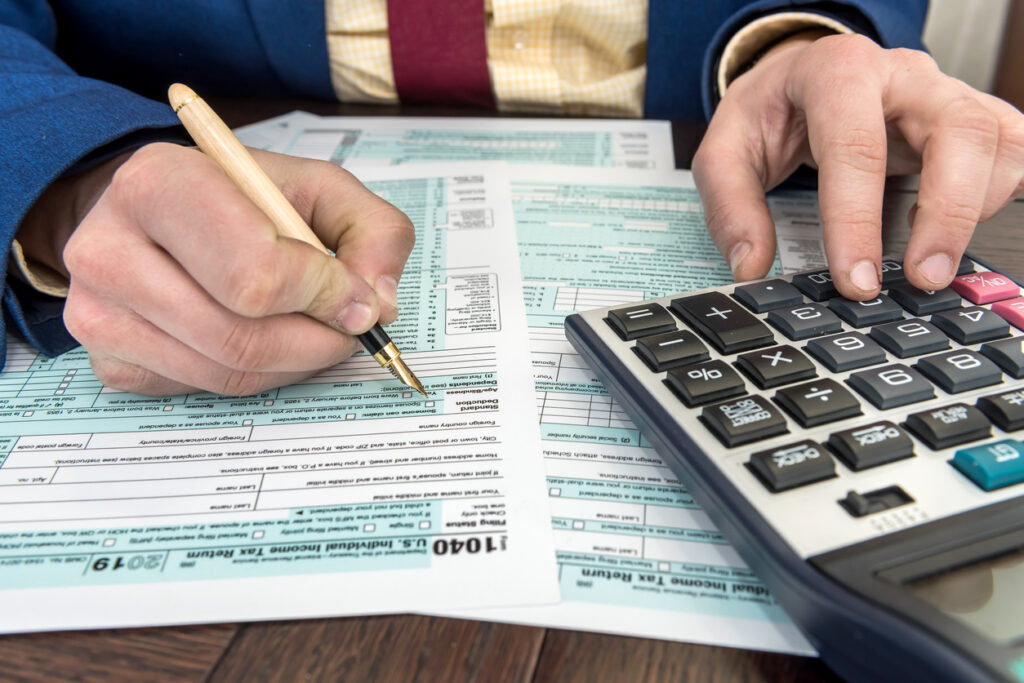TL;DR
US consumers and industry watchers have been waiting for the IRS to disclose new rules about the long-awaited “cash on the hood” tax credit. That wait ended on October 6th, 2023. To benefit from this new tax credit, car buyers must be aware that not everyone is eligible, not every car is eligible, and not all dealerships are eligible. The most important bit of news is that the requirement to have the full amount of the credit as a tax liability has been effectively waived. This will make far more people eligible to take full benefit of the credit.
As they say, the devil is in the details, so keep reading to learn them.
The Nitty Gritty Details of the New Cash on the Hood Tax Credits
Everything below applies to electric vehicles (EVs) purchased by US taxpayers starting in January of 2024. Some rules for 2023 changed on October 6, but those mainly apply to reporting requirements for dealers and buyers regarding purchases. For simplification, I’m ignoring that (you can read about it here) and focusing on rules going into effect on January 1st, 2024.
In 2009, then-President Obama signed an economic stimulus bill known as Cash for Clunkers. This was a boon to qualified drivers who wanted to trade in an older, inefficient car for something newer with better gas mileage. During the program, nearly 700,000 cars were taken off the road and replaced by new fuel-efficient cars. This program was a massive boost to the economy, and consumers obviously loved it, because all the funds allocated for the program were gone in just thirty days.
But Cash for Clunkers left many car dealers in the red. Why is this important? Glad you asked.
Occasionally, the IRS Gets It Right
On August 22nd, 2023, there was a working group Zoom-type call between the IRS and twenty participants about the upcoming rule changes to Section 30D of the IRS code (“the EV Tax Credit”). Of the twenty participants, nineteen were from the National Auto Dealers Association, representatives from Tesla Finance, and sales managers from auto dealership groups from around the country. I was the only participant who introduced themselves as a journalist.
The purpose of this working group was to discuss the guidelines that the IRS updated a few days ago as of this writing (October 6th). The criticism from the dealers towards the IRS regarding how poorly the Cash for Clunkers program was executed was nothing short of stunning. All said they lost money because of how bad the guidelines had been during the program. It was clear to me, based on the unanimous objections of the dealers, that unless the IRS got this “Cash on the Hood” EV incentive right, dealers simply wouldn’t participate.
The guidelines published on October 6th make it clear that the IRS listened during that working group, and if the new rules are executed as described, both dealers and buyers should be happy with these new cash on the hood tax credits.
The First Thing You Should Know: Buy From a Registered Dealer
For starters, you must buy your EV from a “dealer” that is registered to process the IRS tax credit. When you buy your new (or used – more on this in a bit) EV from a registered dealer, the dealer must provide the buyer with a seller’s report that carries the penalty of perjury if it includes intentionally false information at the time of sale. This report will have a lot of information, but you mostly just need the document to file with your taxes.
The dealer is motivated to get this report correct because the IRS pledges to pay the dealer the credit within 72 hours of the report being filed, after the sale is complete.
Dealers must apply to the program with the IRS and be accepted before they can start selling cars to the public under the program’s guidelines. It is a safe bet that manufacturers who use direct sales (Tesla and Rivian) will be all over this. More traditional franchise dealers will have to apply individually. As a consumer, what you need to know is that you must purchase the EV through a registered dealer. And do not take possession of the car until you get that seller’s report!
The Second Thing You Should Know: Not Every EV Is Eligible
Not every EV qualifies. Even EVs that qualify won’t always qualify.
The best way to determine if an EV you are considering qualifies for the federal tax credit is to see if it is on this list. While being on that list is a necessary condition, it is also an insufficient condition.
There is an evolving list of requirements that an EV must meet to be eligible for the credit, including MSRP limits, meeting a certain amount of North American-sourced battery manufacture, having its final assembly completed in North America, and so forth. But most important is that even if an EV meets all these requirements, it still is not going to get the tax credit unless the manufacturer certifies that it meets all the requirements. And the easiest way to see if the manufacturer has certified that EV is by checking to see if it is on the IRS’s list.
But wait, there’s more! The EV’s MSRP, including options, must be less than a specified amount. Take the case of Rivian’s R1S. The MSRP is $78,000, and as such, it qualifies for the EV tax credit thanks to its $80,000 MSRP price limit and its place on the IRS’s list of qualified vehicles. But if you are tempted by any of the options, like larger batteries or even just premium paint, you’re going to go over the MSRP limit and lose eligibility for the credit. The MSRP must not exceed the limit ($55,000 for cars, $80,000 for trucks and SUVs), and that includes all factory-installed options. That does not, however, include dealer-installed options, fees, taxes, and so forth.
The Third Thing You Should Know: Not Every Us Taxpayer Is Eligible
Not every taxpayer qualifies as there are (still) income limits, which are typically described as $150,000 for single taxpayers and $300,000 for those married and filing jointly. If you earn more than that, sorry, no soup for you.
The Fourth Thing You Should Know: If You Transfer the Credit to a Dealer and You Exceed the Income Limit, You Need to Repay the IRS
The “tax on the hood” tax credit is still an individual tax credit for the taxpayer purchasing the EV. You are effectively assigning the credit to the dealer, and the IRS will pay the dealer the amount within 72 hours. When you buy a qualified EV from a qualified dealer, you will need to give the dealer some basic information that the dealer will report to the IRS. The dealer will then give you a report that you will file with the IRS the next time you pay taxes.
One of the things you must give to the dealer is your estimated adjusted gross income for the current tax year. The natural question that arises is, what if you guess wrong and make too much money (lucky you)?
That’s simple. You’ll owe the IRS the tax credit back.
Except there is an asterisk there as well. If your filing status changes from the year prior to your purchase and the current tax year, and you would have qualified for the income limit under your previous filing status, then the income limit is forgiven for the current tax year. An example of how this applies and who it would benefit could be couples who marry. A single person might qualify for the income limits in 2023 but then marry in 2024, and their partner’s income puts them over the limit. This loophole allows the couple to still realize the credit, even though their new filing status and income levels put them over the top.
The Fifth Thing You Should Know: You Do Not Need to Meet the Tax Liability to Get the Full Credit
Taxpayers who have followed IRS Code 30D long enough know that to take full advantage of the EV tax credit, you need to have a proportional tax liability.
Good news: that’s no longer the case.
In a rather stunning policy decision, the IRS has ruled that if a qualified buyer purchases a qualified vehicle from a qualified dealer and that buyer does not have sufficient tax liability to offset the credit, the overage is effectively waived.
I firmly believe this is directly due to the IRS listening to the dealers complain about Cash for Clunkers on the August 22nd Zoom call. The dealers want no part in getting between the IRS and taxpayers. The dealers also demanded to be paid promptly, or else they would be effectively loaning the US government money for what could be a year or longer.
This left open the very real possibility that dealers could lure unsuspecting consumers into an EV with an on-the-spot $7,500 price reduction with the (also very real) potential of the consumer not having the tax liability to cover it when they file. Many people, myself included, believed that in such cases, the IRS would require repayment for any “overage.”
But we were wrong. In what can be described as the US Government protecting consumers from potentially predatory sales practices, the IRS has wisely chosen to turn a blind eye to the case of insufficient tax liability.
The Sixth Thing You Should Know: Used Vehicles Now Qualify
All this now applies to used vehicles, starting this year with a potential credit of up to $4,000. The income requirements are somewhat lower, and the criteria for the vehicles are different. All used vehicles:
- Must be more than two years old
- Must never have had a used vehicle credit applied previously
- Must have a negotiating price (not MSRP) less than $25,000
The EV is also not under the same certification requirements, but the dealership selling the vehicle must still be registered with the IRS, and similar reporting requirements are in effect.
The Seventh Thing You Should Know: Transferring the Credit Is Voluntary
This is 100% voluntary. You do not have to transfer the tax credit to the dealer, and if you do not, you can still apply for the credit when you file your taxes, assuming you bought a “qualified vehicle” off the IRS list and met all other MSRP and income limits.
Whew! You’re forgiven if your head is spinning. While it can be a lot to take in, if you let it percolate for a while and stick to the guidelines, it isn’t so bad. Just remember:
- Buy from a qualified dealer and get the sales report before taking delivery
- Buy a qualified vehicle, and ensure you meet the MSRP requirements
- Be careful not to make too much money the year you take possession
IRS Section 30D — What Is a Tax Credit, Anyway?

There is a lot of confusion about tax credits. Gratefully, the new rules eliminate the risk of misunderstanding the credit. Image credit: iStockPhoto.
My experience in EV-related social media groups leads me to conclude there is a lot of misunderstanding about tax credits, and even about taxes. A tax credit isn’t a deduction, nor does the credit have anything to do with the withholdings from your paycheck that an employer deducts on your behalf.
The simplest way to think of a tax credit is to think of it as a coupon to get a certain amount of money off your tax bill – in the case of the EV credit brought to you by Section 30D of the IRS code, that is typically $7,500. You can assign that credit to the dealer in 2024, which the dealer applies to the sales price of the car. For more information, check out this description.






0 Comments